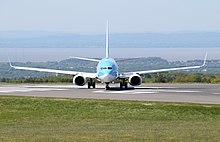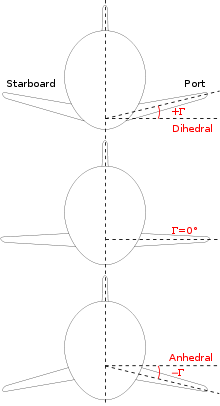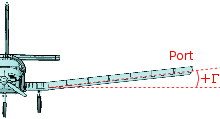
Back ثنائي السطوح (طيران) Arabic V-Stellung German Ángulo diedro (aeronáutica) Spanish زاویه هفتی Persian V-kulma Finnish Dièdre (avion) French Dihedral ID Diedro (aeronautica) Italian Dihedraal Dutch Diedro (aeronáutica) Portuguese
This article includes a list of general references, but it lacks sufficient corresponding inline citations. (June 2012) |



In aeronautics, dihedral is the angle between the left and right wings (or tail surfaces) of an aircraft. "Dihedral" is also used to describe the effect of sideslip on the rolling of the aircraft.
Dihedral angle is the upward angle from horizontal of the wings or tailplane of a fixed-wing aircraft. "Anhedral angle" is the name given to negative dihedral angle, that is, when there is a downward angle from horizontal of the wings or tailplane of a fixed-wing aircraft.
Dihedral angle has a strong influence on dihedral effect, which is named after it. Dihedral effect is the amount of roll moment produced in proportion to the amount of sideslip. Dihedral effect is a critical factor in the stability of an aircraft about the roll axis (the spiral mode). It is also pertinent to the nature of an aircraft's Dutch roll oscillation and to maneuverability about the roll axis.
Longitudinal dihedral is a comparatively obscure term related to the pitch axis of an airplane. It is the angle between the zero-lift axis of the wing and the zero-lift axis of the horizontal tail. Longitudinal dihedral can influence the nature of controllability about the pitch axis and the nature of an aircraft's phugoid-mode oscillation.
When the term "dihedral" (of an aircraft) is used by itself it is usually intended to mean "dihedral angle". However, context may otherwise indicate that "dihedral effect" is the intended meaning.